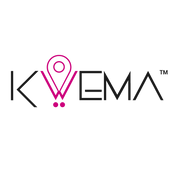In a world marked by uncertainty and unpredictability, the importance of disaster preparedness cannot be overstated. Disasters, whether natural or man-made, have the potential to disrupt operations, threaten safety, and test the resilience of any organization. As Disaster Preparedness Month approaches, now is the ideal time to evaluate whether your staff is truly ready to face the unexpected. Here are five essential ways to assess and enhance your team's disaster preparedness:
.

1. Knowledge is Power: Training and Awareness
The first step towards effective disaster preparedness lies in imparting knowledge. Does your staff have a clear understanding of potential hazards, evacuation protocols, and emergency contact information?
Regular training sessions and workshops can provide them with essential skills and information to respond swiftly and confidently in crisis situations. Conducting drills and simulations can help identify gaps in knowledge and areas that need improvement.
2. Communication: A Lifeline in Crisis
Effective communication is the linchpin of any disaster response plan. Does your staff know how to communicate within the organization and with external agencies during a crisis?
Assess their familiarity with communication tools, emergency contact lists, and the chain of command. Regularly updating contact information and ensuring that everyone knows how to access communication channels is crucial.
3. Emergency Supplies and Resources
Ask yourself: Are emergency supplies readily available? Does your staff know where to find them?
Adequate supplies, including first aid kits, water, non-perishable food, flashlights, and batteries, can make a significant difference during an emergency. Regularly check and replenish supplies, and make sure your staff is aware of their location.
4. Roles and Responsibilities
In the face of a disaster, roles can become muddled and confusion can reign. Establishing clear roles and responsibilities beforehand can help prevent chaos. Does your staff understand their specific roles in disaster response?
Assign duties such as evacuation coordinators, first aid responders, and communication liaisons. Regularly review and update these assignments to reflect changes in personnel and organizational structure.
5. Continuity Planning: Ensuring Business Resilience
Disasters can disrupt not only the physical environment but also daily operations. Does your staff know how to ensure the continuity of essential business functions?
Developing a business continuity plan can help minimize disruptions and maintain essential services. Identify critical processes, establish remote work protocols, and outline steps for resuming operations after a disaster. Regularly review and update these plans to account for changes in technology, personnel, and procedures.

Cultivating a Culture of Preparedness
Disaster preparedness is not a one-time endeavor; it's an ongoing commitment to safety and resilience. By assessing your staff's readiness in these key areas, you're taking significant strides toward ensuring their well-being and the organization's continuity in the face of adversity. Disaster Preparedness Month serves as a reminder that readiness requires proactive planning, continuous training, and a collective commitment to staying informed and prepared. As you evaluate your staff's disaster preparedness, remember that being ready can make all the difference when disaster strikes.
So, are you ready?
